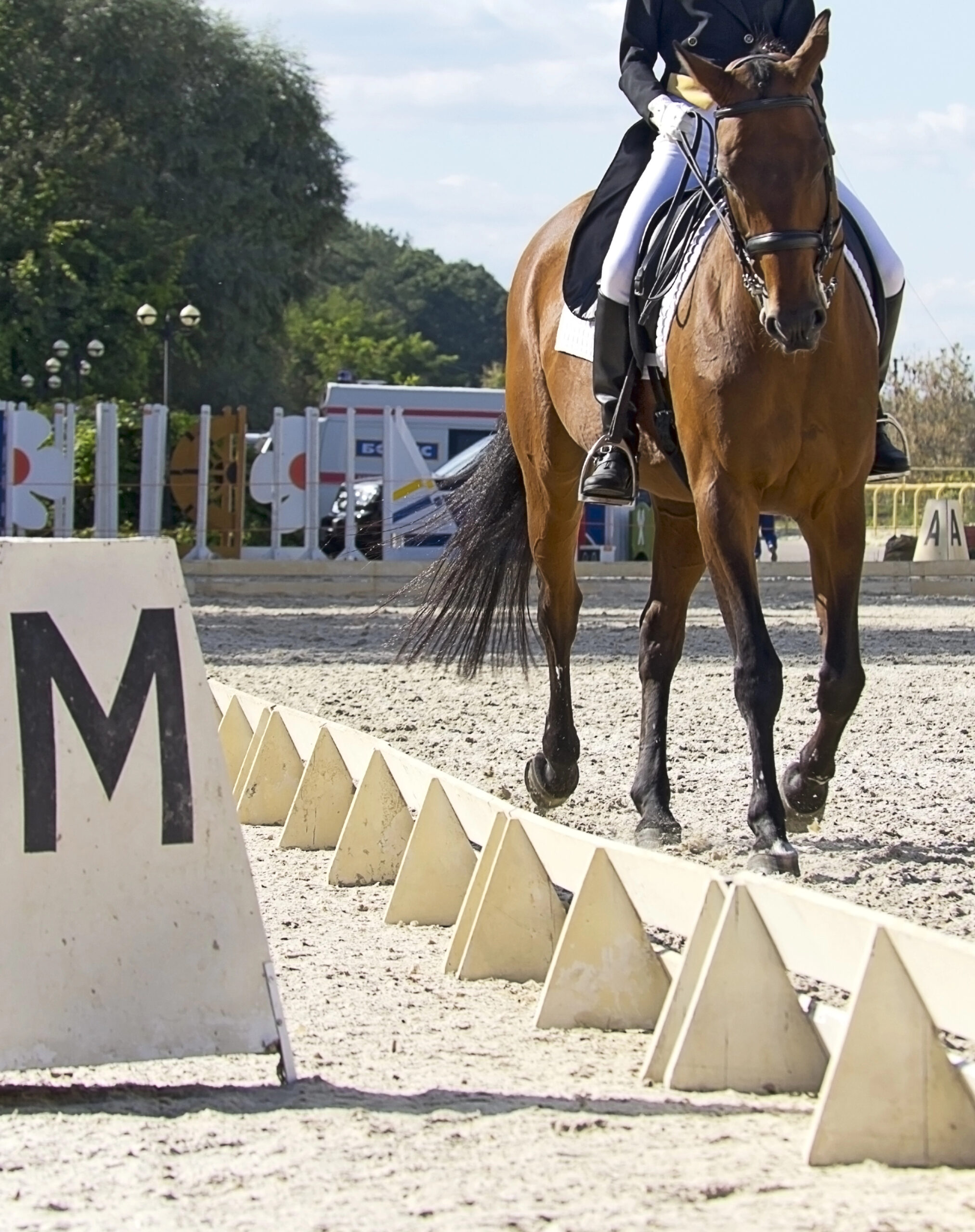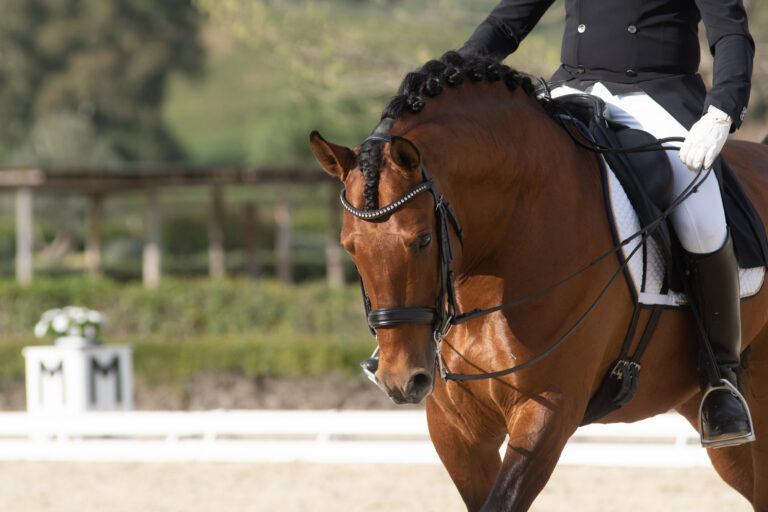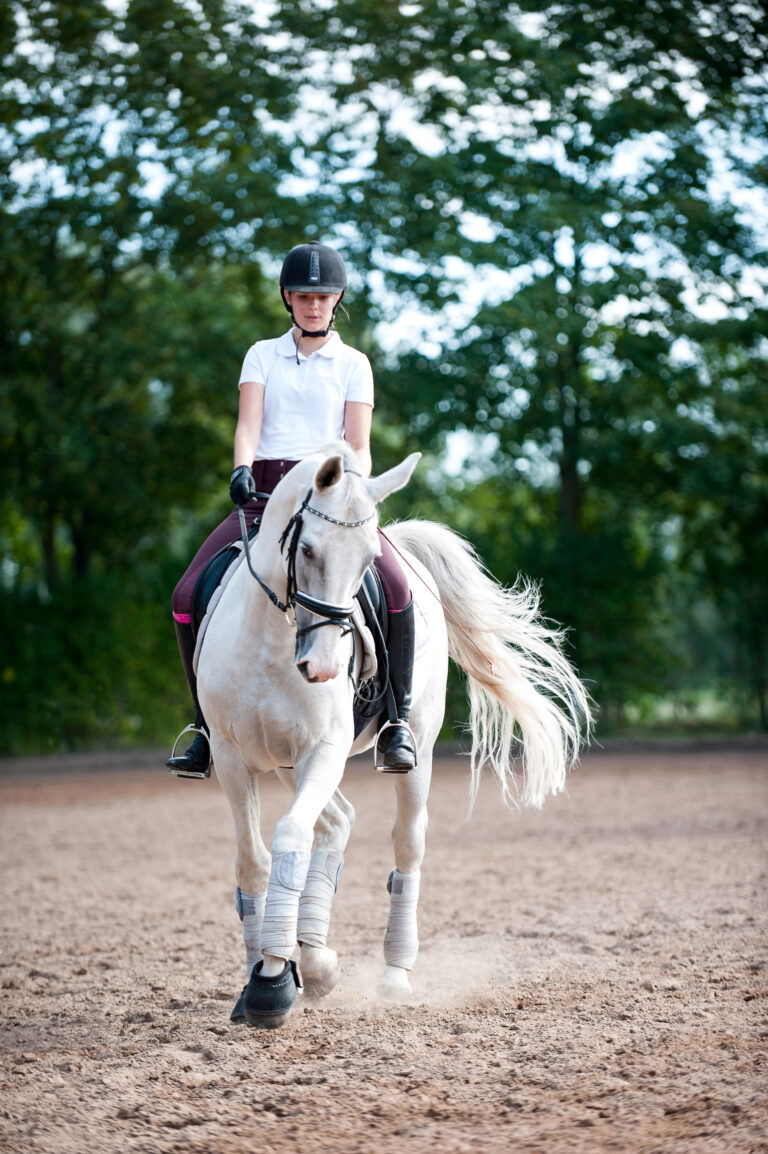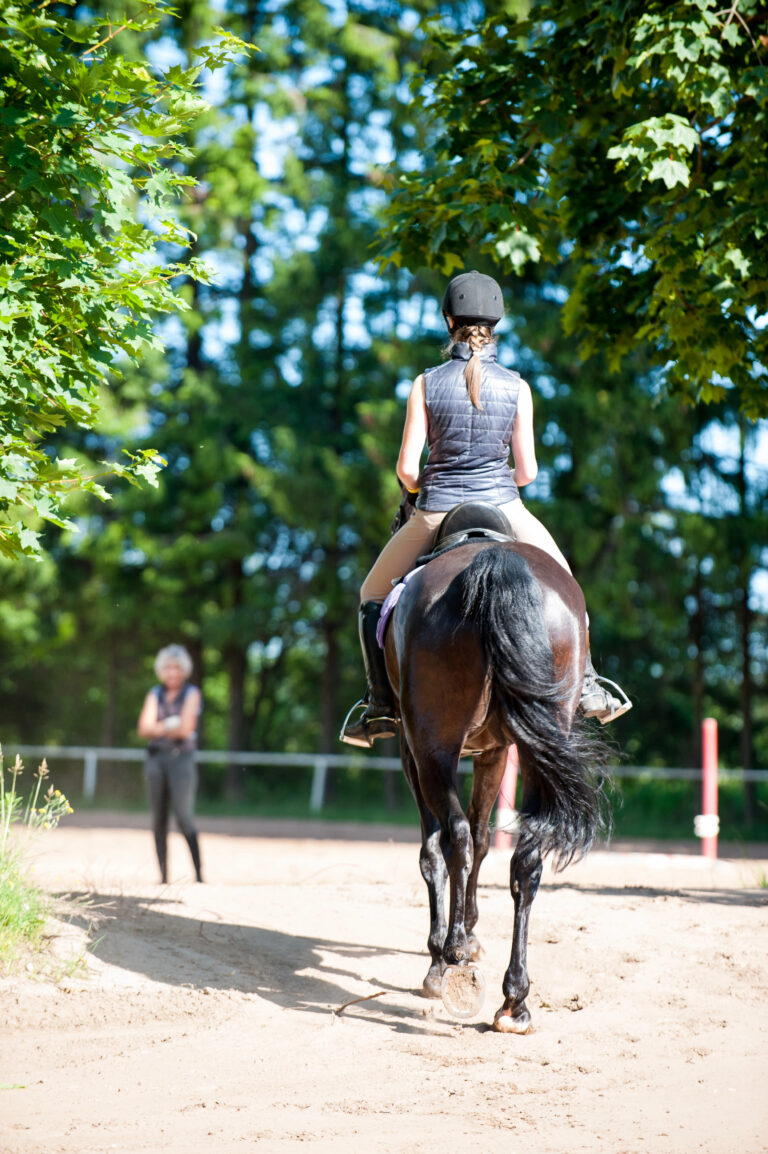Understanding Dressage Tests: A Guide for Adult Amateurs
A dressage test is like a performance where you and your horse follow a set of instructions, called “movements,” in an arena with letters around the edges. These movements show how well you and your horse can work together in things like walking, trotting, and turning. The judge watches you and gives scores based on how accurately you follow the test and how smooth your horse looks.
Even if you don’t plan to compete, understanding dressage tests is really helpful. They’re designed to guide your training and help you improve over time. The tests focus on things like balance, rhythm, and smooth transitions, all of which are key skills in dressage.
I still remember my first dressage test—it was a bit nerve-wracking! I had practiced a lot, but when I rode into the arena, I forgot where I was supposed to trot and ended up turning the wrong way. But I kept going, and by the end, I was proud that we finished the test. Looking back, that experience helped me understand how useful dressage tests are, even when they don’t go perfectly.
What is a Dressage Test?
A dressage test is a series of movements you and your horse perform in a specific order inside an arena. The arena has letters marked around the edges, like ‘A’, ‘C’, ‘E’, and ‘B’. These letters are important because they tell you where to start and end different movements. For example, you might need to trot at ‘C’ or halt at ‘X’ (the center of the arena).
In a test, you’ll perform different gaits like walking, trotting, and cantering, as well as turns, circles, and transitions between gaits. Judges watch to see how well you follow the test and how balanced, relaxed, and responsive your horse is during the ride. Each movement is scored on a scale of 0 to 10, with 10 being perfect.
It’s not just about following the steps, though. The judges also look at how smooth and accurate you are, how well you and your horse work together, and if your horse is moving forward with energy. This is why understanding the structure of the test is so important—it’s your guide to showing off the skills you’ve been practicing.
Whether you plan to compete or just ride for fun, learning dressage tests can help you train your horse better. They help you focus on important skills like balance, rhythm, and transitions, which are the building blocks of good riding.
The Levels of Dressage Tests
Dressage tests are divided into different levels, each with its own level of difficulty. These levels are designed to help both you and your horse gradually improve as you move through your dressage journey. Think of it like moving up through grades in school—each level builds on what you learned in the one before.
The Introductory Level is the first step for beginners. These tests focus only on walking and trotting, so you don’t have to worry about cantering just yet. This level is great for riders who are just starting out or for horses that are new to dressage. It helps you focus on the basics, like riding with a steady rhythm and maintaining good control.
Next is Training Level, where things start to get a little more challenging. At this stage, you’ll be asked to canter as well as trot and walk. The goal at this level is to show that your horse can move forward freely and stay balanced in all three gaits. It’s a stepping stone that prepares you for the more advanced levels.
As you progress, there are higher levels like First Level, Second Level, and beyond, where the movements become more difficult. In these levels, you’ll work on things like lateral movements (where your horse moves sideways) and collection (where your horse carries more weight on its hind legs and moves with more control). Each level challenges you and your horse to become more refined in your riding skills.
The great thing about these levels is that they’re designed to help you improve step by step. You don’t have to jump into the harder tests right away. As you and your horse get better, you can move up to the next level when you’re ready. Understanding which level is right for you will help you focus on the right goals for your training.
The Levels of Dressage Tests
Dressage tests are divided into different levels, each becoming more challenging as you and your horse develop new skills. These levels help you progress step by step, starting with simpler movements and advancing to more difficult ones as you improve together.
The Introductory Level is where most riders begin. These tests focus on the basics—mostly walking and trotting—with a strong emphasis on smooth transitions and control. While some versions of Introductory Level may include canter, it’s designed to ease you and your horse into the process without too much pressure. It’s a great starting point for riders new to dressage or horses that need to build confidence in the arena.
After that comes Training Level, where cantering becomes a bigger focus. At this stage, you’ll be asked to show your horse’s ability to move forward freely at the walk, trot, and canter, maintaining a steady rhythm and balance. This level helps you and your horse practice the basics of all three gaits while preparing for more advanced movements in future tests.
As you move up through the levels, you’ll reach First Level, Second Level, and beyond. These higher levels start introducing more advanced skills, like lateral movements (where your horse moves sideways while going forward) and collection (where your horse shifts more weight to the hind legs, moving with greater balance and control). Each level builds on what you’ve already learned, challenging both you and your horse to refine your technique.
The best part is, you can take your time and work through each level at your own pace. Understanding which level suits your current abilities helps guide your training, making sure you’re always working toward achievable goals and steadily improving along the way.
How to Read a Dressage Test Sheet
Once you’re ready to ride a dressage test, it’s important to know how to read and understand the test sheet. This sheet will guide you through the movements and also show you what the judges are looking for. Here’s a breakdown of how to read it:
First, you’ll see a list of movements on the left side of the sheet. These are the specific tasks you and your horse need to perform in the test, like “trot at C” or “circle at E.” The movements are numbered in the order they should be performed, so you can follow them like a checklist as you ride.
Next to each movement, you’ll find directives. These tell you what the judge will be focusing on during that movement. For example, if the movement says “trot circle at B,” the directive might include words like “balance, bend, and accuracy.” This means the judge will be looking at how well your horse maintains a round shape on the circle, whether your horse is bending properly, and if you’re hitting the correct letter at the right time.
Then, there’s the score column. Judges give a score between 0 and 10 for each movement, with 10 being perfect and 0 meaning the movement wasn’t performed at all. Most of the time, you’ll see scores around 6 or 7, which indicate satisfactory or fairly good work. If you receive a lower score, it usually means there’s room for improvement, and the judge’s comments will often explain what went wrong.
Some movements will have a coefficient, meaning the score for that movement is multiplied by 2. These are usually important movements like the final halt or specific transitions, so nailing these can boost your overall score.
You’ll also see comments from the judge alongside the scores. These are short notes that explain why you received a certain score and what you could improve. For example, if you get a 5 on a canter transition, the comment might say “needs more impulsion” or “unbalanced.” These comments are super valuable because they help you understand what you need to work on for next time.
By understanding the test sheet, you can focus your training on the areas that need improvement and continue to refine the movements that are already going well. It’s a useful tool for seeing where you and your horse are excelling and where you can improve to achieve better scores in the future.
Preparing for Your First Dressage Test
Getting ready for your first dressage test can feel a little overwhelming, but with the right preparation, it can also be an exciting and rewarding experience. Let’s break down a few ways to make sure you’re prepared when the big day comes.
Practice Makes Perfect
One of the most important things you can do is practice the movements in your test at home. You don’t need to ride through the entire test every time you practice, but it’s helpful to work on individual movements. For example, if your test has a 20-meter circle, spend time working on making your circles round and accurate, hitting the correct letter every time. You can also practice transitions between gaits—like moving smoothly from trot to walk—to help build your horse’s responsiveness.
Another great way to practice is to have “test riding days” where you ride the entire test from start to finish, just as you would in a real competition. This will help you get comfortable with the flow of the test and how the movements link together. You could even have a friend or trainer stand by and act as the judge to give you feedback. Riding the test under a bit of pressure will make you feel more prepared on show day.
Memorizing Your Test
Memorizing the test can be a challenge, but there are a few ways to make it easier. One common technique is visualization. Sit down and mentally ride through the test, imagining yourself moving through each movement and remembering where each transition happens. You can also walk through the test on foot in the arena to help you remember the pattern.
Another option is to use a test caller during your first few tests. A caller is someone who reads the movements out loud as you ride, which can be a big help if you’re nervous about forgetting where to go. Just remember, a caller can only tell you the next movement—they can’t coach you through it—so it’s still important to have a good understanding of the test before you ride.
Understanding the Flow
One of the most important parts of riding a dressage test is understanding the flow of the movements. Dressage isn’t just about completing each movement on its own; it’s about how smoothly you and your horse transition between them. For example, if the test asks you to trot a circle and then immediately transition to a walk, you want that transition to be as smooth as possible. Judges are watching to see how balanced your horse stays during transitions and how well you maintain rhythm and control.
Spend time practicing these transitions at home. Work on making them smooth and controlled, so your horse doesn’t rush or resist. The better your transitions are, the more connected and polished your test will look.
How to Handle Mistakes During a Dressage Test
Even with the best preparation, mistakes happen during dressage tests—especially when you’re new to competing. The important thing is knowing how to handle them so they don’t derail your entire ride. Let’s talk about what to do when things don’t go as planned.
Everyone Makes Mistakes
First of all, remember that everyone makes mistakes. It’s totally normal, whether you’re a beginner or a seasoned rider. Some common mistakes include going off course, missing a letter, or not hitting the exact transition at the right time. If you go off course, the judge will ring a bell or blow a whistle to let you know. When that happens, don’t panic! Simply stop, walk over to the judge, and they will tell you where to restart. You will receive a small deduction, but you can still continue and finish the test.
Other mistakes, like not hitting a movement at the right letter, may not be as obvious, but they can affect your score. If you miss a transition by a few steps, don’t dwell on it—just keep moving forward. The key is to maintain a calm, focused mindset and not let a small error throw off the rest of your test.
Recovering Quickly
The most important part of making a mistake is how you recover. If something goes wrong, take a deep breath and focus on the next movement. Staying calm is key because your horse can sense your emotions—if you get flustered, your horse might become tense too. Instead of worrying about the mistake you just made, focus on riding the next movement as smoothly as possible. Judges understand that mistakes happen, and they’ll be watching to see how well you handle them.
When you make a mistake, the judge is not only evaluating the error itself but also how you respond. Riders who recover gracefully and stay composed demonstrate resilience, which leaves a good impression. The ability to move on from a mistake and finish the test strong is a valuable skill.
Reassuring Your Horse
Sometimes mistakes happen because your horse becomes nervous, distracted, or spooks. When this happens, it’s important to reassure your horse. Stay calm, use soft aids, and guide them back to the task at hand. Horses take their cues from you, so if you remain relaxed and positive, your horse is more likely to settle down and continue.
For example, if your horse spooks at a corner of the arena or struggles with a transition, don’t get frustrated. Instead, keep a steady hand, take a deep breath, and encourage your horse to focus. A quick pat or soft word of encouragement can help calm your horse and get both of you back on track.
The Key Takeaway
Mistakes are a natural part of the learning process in dressage. The important thing is to recover quickly, stay calm, and finish the test with confidence. Judges appreciate a rider who can stay composed and ride through challenges, and your horse will thank you for keeping things calm and positive, even when things don’t go perfectly.
Decoding Feedback and Scores
After your test, you’ll receive a score sheet that shows how you did in each movement. This is where you get to really learn from your test and figure out what’s working and what needs improvement. Let’s walk through how to decode the feedback and scores so you can use them to improve your riding.
Interpreting Judge’s Feedback
Each movement on your test sheet will have a score and, in many cases, a comment from the judge. The score is a number from 0 to 10, with 10 being perfect and 0 meaning the movement wasn’t completed. Most scores fall between 5 and 7, where 6 is “satisfactory,” 7 is “fairly good,” and anything above 7 shows you’re really doing well.
The judge’s comments next to the score help explain why you got that number. For example, if you receive a 5 on a trot circle, the comment might say, “Needs more bend,” which means you need to work on getting your horse to bend more around the circle. Judges might also note things like “unsteady rhythm,” “lacking impulsion,” or “incorrect positioning.” These comments are really helpful because they tell you exactly what you need to focus on in your training.
Positive feedback is also important. Look for comments like “steady rhythm,” “good engagement,” or “correct aids.” These show you where you’re doing well, so you can keep building on those strengths.
Creating a Plan Based on Scores
Once you’ve gone over the feedback, the next step is to use your scores to create a focused training plan. Start by identifying the areas where you scored lower or received constructive comments. These are the areas where you’ll want to spend extra time in your next training sessions.
For example, if you consistently scored lower on transitions, you might focus on smooth transitions between gaits during your practice rides. If your horse needs more impulsion in the trot, you can incorporate exercises that encourage forward movement, like trot-to-canter transitions or lengthening and shortening the stride.
It’s also helpful to track your progress over time. Keep your test sheets and compare them after each competition. Are your scores improving in certain areas? Are you seeing consistent issues that need more attention? By keeping track, you can see how your training is paying off and where you still need to improve.
Focusing on Long-Term Growth
Remember, dressage is a journey, and every test is just one step along the way. Don’t get discouraged by a few low scores or tough feedback—use it as motivation to keep improving. Even the best riders started out with rough tests, and it’s through steady, focused work that you and your horse will continue to grow.
By setting specific goals based on your test results and being consistent in your training, you’ll start to see progress. It might not happen overnight, but with patience and dedication, you’ll notice your movements becoming more fluid, your transitions smoother, and your overall scores improving.
The Big Picture
Judges’ feedback and scores aren’t just about this one test—they’re a roadmap for your future success. By taking the comments seriously and working on the areas that need improvement, you’ll be better prepared for the next test. It’s all about learning, improving, and celebrating the progress you and your horse make along the way.
Final Thoughts
After diving into all the details about dressage tests—from understanding how they work to preparing for them, handling mistakes, and decoding feedback—it’s clear that every step of the process is a valuable learning experience. Whether you’re aiming to compete or just looking to improve your skills as a rider, dressage tests offer a structured way to measure progress and push yourself to become better.
Here are some key takeaways:
- Dressage tests are tools for improvement: Whether you’re riding at home or in a competition, these tests help you and your horse develop important skills like balance, rhythm, and accuracy.
- Preparation is key: Practice individual movements at home, memorize your test, and understand the flow between transitions so you’re ready to ride confidently on test day.
- Mistakes happen: Everyone makes mistakes, but how you handle them matters. Stay calm, recover quickly, and keep reassuring your horse. Judges will appreciate your resilience and ability to stay focused.
- Use feedback to grow: The comments and scores you receive from judges are a roadmap for your next steps. By focusing on areas of improvement and celebrating your wins, you can develop a solid training plan that helps you get better with each ride.
Dressage isn’t about being perfect—it’s about progress. Each test, whether it goes perfectly or has its challenges, is a chance to learn and improve. Embrace the journey, enjoy the connection with your horse, and keep striving to be the best rider you can be.



